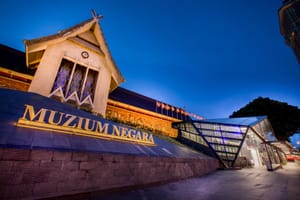A NATIONAL MUSEUM is often government-funded and dedicated to preserving a nation’s history and culture. Each country may differ in how they present their national storyline. When it comes to formerly colonised countries in Southeast Asia, including Malaysia, most showcase the rise of the nation from early civilisation to colonisation and then independence, and later, its current development. National museums can also be seen as a medium to instil “nationalism” in citizens.
Muzium Negara in Kuala Lumpur was built on the ruins of Selangor Museum, which was bombed by the Alliance Air Force on 10 March 1945 during World War II. A temporary small museum called Muzium Negara Sementara was constructed under the order of General Sir Gerald Templer, the British High Commissioner to Malaya in 1952, and operated briefly for eight years.
Later, Tunku Abdul Rahman (1903–1990), the first Prime Minister of Malaysia, decided to establish a new national museum that reflects the national identity of the country after gaining independence on 31 August 1957.[1] Tunku appointed Haji Mubin Sheppard (1905–1994) to spearhead the establishment of Muzium Negara, along with Ho Kok Hoe from Singapore (1922–2015) as the main architect for the museum in 1959. They travelled to Kedah to be inspired by the Malay houses and structures there; the National Museum must look Malayan—“no boxes and no glass”.[2]






